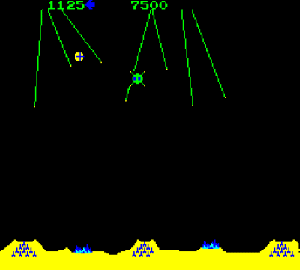NEW CRITIQUES
http://bang.dhs.org/if/library/criticism/
Interactive Fiction Criticism
By James Decker
If you believe CNN... no seriously, if you believe CNN's June 20th report on computer game design, you believe that game concepts emerge magically and only need to be reared. No wonder so many games are purely derivative. CNN's documented source on the game design process is the Mac gaming guru Brian Green. Who? Well, the newsflash here is not that someone is still developing games on the Mac, but that the industry, the media, and most likely the mainstream consumer has little appreciation for game design as an art form. Chicken-or-egg ontology aside, gaming and interactive fiction have begun to
founder as an exclusive domain of technical experts where storyline, plot, character, and setting are derived or better yet, licensed from low grade television and film. It seems to me that if mainstream news media started interviewing authors

of Harlequin Romances about their craft, it would signal a crisis in the world of literature. Cheap success in the mainstream is by no means unique to computer gaming culture. The same pre-chewed food abounds in music, literature, painting, and for that matter fine dining. But with these forms, a history and criticism are already established and breakthrough artists are widely known by name. Establishing a lasting aesthetic culture takes time and the critic may function as the second hand on that timepiece, but it is an important function. Reflection on what works, what doesn't, and what has not yet been attempted is vital to the development of digital culture. But the critic must be aware of the hours and minutes, the history of the form, and even develop unhealthy interests in what some would call ephemera but that he or she recognizes as the foundations of humanistic computing and digital art. There is work to be done, and the first notes of that history are indeed beginning to be sung.
Art Spiegleman's article on Interactive Fiction argues that the form first had to escape the technological cutting edge in order to find relief from financial pressures that curb creative gestation and experimentation. Text-based adventures, he suggests, are in the creative cat-bird seat right now whereas graphically intensive games still require large budgets and large production staff that tend either to edit or overindulge the creative impulse. Spiegleman quickly denies, however, that games have to stop being fun in order to start being art. It made me think that memory constraints of wireless handhelds may (for awhile) afford a little time to explore this notion in earnest: whether fun really is synonymous with Nvidia GeForce particle shading. The reviews of Interactive Fiction at http://bang.dhs.org/if/library/criticism/ don't ignore technical creativity, but they position it alongside "plot, prose, and puzzles" as if all of these determine the merit, the fun and the meaning of the game. Joe Mason's fan review of "So Far" is widely referred to as an important example of IF criticism because it genuinely relishes minute details in "So Far" and there finds connection with experiences outside the game, you know, sort of like people do with art. While marketing-speak makes it difficult to speak calmly about graphics cards, the larger problem may be in finding story lines that require any creative interpretation (please note, the preceding word is not interaction).
Criticism is by no means all that is needed to sustain the lively arts of digital gaming. We need to attend to historic precedent and acknowledge the importance of our childhood experiences and investments in the forms of digital gaming. The digital "ancients" are not even forgotten yet, not quite unfamiliar eveb, but they already resist our categorical understanding to a surprising degree. They cannot be grouped according to their use of text or graphics when
ASCII classics like "Rogue" and music based adventures like "Bad Day on the Midway" lend a healthy blur to such distinctions. In fact, some great games of old left the screen completely such as the Infocom suspense thriller "Deadline" which delivered physical evidence in a true-crime dossier. Deadline also

innovated real-time pacing in a strategic genre, though Dune II would take credit for it used graphics whereas Deadline was text-only. If we need to learn to see past boundaries of text, graphics, and audio we cannot fail to attend to the social settings where games are played. The supermarkets and bowling alleys of suburbia were the unlikely sites of pop art masterpieces like Missile Command with its Cold War subtext that was not lost on Reagan-era 12 year olds even if war driven consumer economics were not explicity understood. The 7-Eleven working class beer depot made space for the altered states, musical insanity, and conceptual merriment of a single Donkey Kong console. What were we supposed to do with one Donkey Kong and nothing next to it? I suppose we just had fun. To ignore resonance with social and historical contexts is to miss the lasting

significance andthe cultural role of games and new media as the newest stage for meaning making. What will that meaning be? How will it survive as knowledge and experience? The ATARI simulation of Three Mile Island called "SCRAM" to this day serves as my personal mental model of nuclear reactors and nuclear energy. It's a stand-up model too. We may choose to persist in our expectations that digital games equate only with child's play, and we may believe that art and popular gaming serve different functions, and in that same
ill-informed breath, we may find we've strapped a cheap timepiece to our wrists, a promotional freebie maybe with CNN printed on its face.